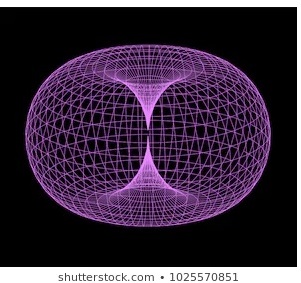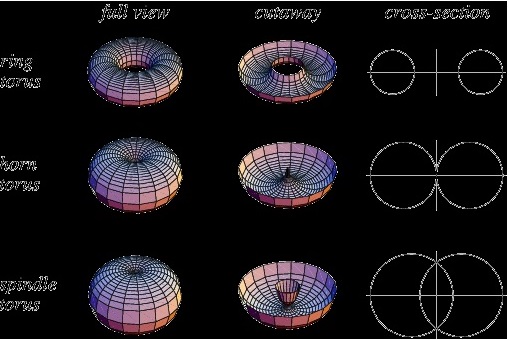The Torah scrolls are made of 39 sheep skins. The Tanak, as it is presently called, are part of the 39 books of the old testament and contains 22 books (as in 22 letters) and each column is called a leaf.
After Jesus’ brutal suffering, death and resurrection, like a sign on the road of life, we are reminded that it is by The Lord’s 39 stripes that we are healed (Isaiah 53:5). We are also reminded that the leaves of the Tree of Life are for the healing of the nations (Revelation 22:2). Healing is restoration, also the full restoration of the two families of “Israel” is a theme recorded throughout the narratives of the prophets of the Holy Scriptures. In the book of “Kings” we first learn about the two divided “houses” Israel and Judah. Later, within the book of the “Prophets” including Ezekiel, Micah, Nehemiah and Jeremiah, the Scriptures record a great promise of restoration and re-gathering. Like the prophets the Aleph Tav is there in His word to serve as two witnesses, both as a witness to the house of Judah and to all the house of Israel as a Herald of Messiah. When we look at the ancient script within the scrolls of the Hebrew Bible, we must keep in mind that Hebrew is the language, the “source code”, the root of all Scripture. In the Masoretic manuscripts each Hebrew character has a number designation and each word and line must add up to a certain original sum or the whole copy was thrown out. This is how we know that the original Hebrew has been duplicated properly and exactly for thousands of years. Like a spell check in alinement with the blueprint. Now when they read from right to left they always skip the letters Aleph Tav, the alpha and omega, and as I’ve explained they do not belong to you and the reason why the 304805 letters in the Torah are to be seen as 304803. Aleph tav was not a word. Some called it “eth” and it was said to be an “untranslatable word”. It was there simply to serve as “a sign” of a direct object in the sentence and that the Aleph Tav was almost never to be spoken when reading Scripture.
Now when one looks at the present day tree as studied by the kabbalists the middle path is aleph mem tav which stands for truth.
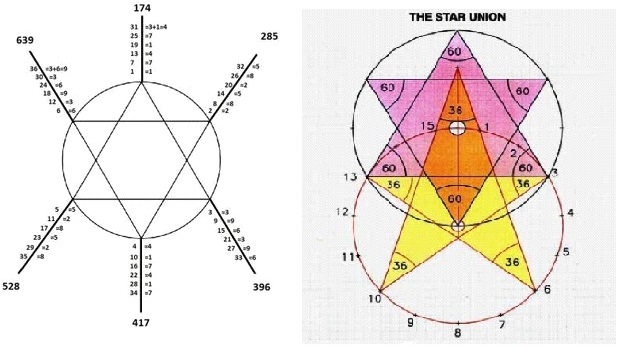

(to be placed next to each other, so one can see the point faces down in the then left tree)
Here you have the tree as is now presented in most Kabbalistic works, and aleph mem tav are here represented as 1, 6 and 10. But what is not shown is Da’ath. Now picture this as the 5 pointed star facing down and now turn the lower 8, 7, 10 upward, then 10 becomes Da’ath the 6 and 9 together. You’ll have the pentagram facing up and its point reaching into Da’ath. The Aleph Tav expressed in the 66 books comes alive, the birth of a king. The point facing down is like facing the wall in Plato’s cave and: have declared the former things from the beginning; and: they went forth out of my mouth, and I showed them; I did [them] suddenly, and they came to pass. Isaiah 48:3 For since the beginning of the world [men] have not heard, nor perceived by the ear, neither hath the eye seen, O God, beside thee, [what] he hath prepared for him that waiteth for him. Isaiah 64:4.
The alpha & omega.
Then said I, Lo, I come: in the volume of the book [it is] written of me, I delight to do thy will, O my God: yea, thy law [is] within my heart. Psalms 40:7-8 And in that day shall the deaf hear the words of the book, and the eyes of the blind shall see out of obscurity, and out of darkness. Isaiah 29:18.
“I the LORD, the first, and with the last, I am he“–Isaiah 41:4 “Thus saith the LORD the King of Israel, and his redeemer the LORD of hosts; I am the first, and I am the last; and beside me there is no God” Isaiah 44:6 “Hearken unto me, O Jacob and Israel, my called; I am he; I am the first, I also am the last” Isaiah 48:12 I am the Aleph and Tav [Alpha and Omega] the beginning and the end, the first and the last. Blessed [are] they that do his commandments, that they may have right to the tree of life, and may enter in through the gates into the city. Revelation 22:13
14.
Let’s have a look at what makes up Tav, and when g-d revealed himself to Abraham (recall the name change Abram!). When he was 99 “amen” he was asked to circumcise himself, a breaking through the circle or in other words removal of ego, to be worthy of g-ds revelations. Even if he elevates himself 99 levels he must remain with humility for g-d.
The twenty-second and final letter of the alef-beis is the letter tav.
The design of the tav is a dalet and a nun. These two letters spell out the name of Dan, one of the tribes of Israel. In the desert, the twelve tribes of Israel were divided into four camps. When the tribes set out to travel, the camp of Dan was the last to proceed. If any of the other tribes left something behind, the tribe of Dan would collect and return it.
The Talmud states: “Who is called a fool? One who loses what (mah) has been given to him.” On a deeper level, the concept of “what has been given to him”, represented by the Hebrew word mah, denotes the state of humility. One who is humble says “Mah—What ? I am nothing before G‑d.”
A person , whose soul has its source in G‑d Himself, is naturally humble. By losing this humility, that which “has been given to him”, that individual throws away his connection to his soul, and is considered a fool. The tribe of Dan thus had the ability to return the holiness and humility (the mah) to the other tribes of Israel.
The importance of Dan can be seen by way of analogy to the human body. A body has a head, hands and feet. At first glance the head is greater than the feet due to its intellectual superiority. But a head cannot reach its destination unless it is transported there by the feet. The tribe of Dan comprises the feet of the Jewish people. It represents the level of bringing the head to its destination. How? Through humility.
The head is, quite literally, the brains of the operation. This often results in arrogance, as when something “goes to your head”. The feet on the other hand have no brains. They work all day long transporting us to our destinations but never get any recognition or honour. Reflecting on the humble service of the feet can bring us to humility.
The heel of the foot has no feeling or knowledge. Placing the heel of one’s foot inside a shoe, where it’s dark, represents the concept of accepting the yoke of Heaven in a cold, dark world. Just as the feet are the foundation and the support of the human body, so too accepting the yoke of G‑d is the foundation of Judaism. One must have the humility to accept the will of G‑d beyond question and beyond rational understanding. It is the letter tav, the letter of humility, that allows the individual to continuously embrace the love of G‑d and Torah, which all too easily can be left behind through human ego and arrogance.
On a practical level, the word Dan means “to judge”. A true student realizes that he must judge his every action before performing it. By looking into the “the Code of the Law” the student learns that the performance of every action, whether actual law or beyond the letter of the law, has its own circumscribed areas, responsibilities, and particulars. By acknowledging the authority of the Code of the Law, one is able to fulfil all of G‑d’s laws to the fullest degree. Again, this only comes through humility. If a person were to rely only on his mind and intellect, he might succumb to arrogance and convince himself that one commandment or another is not really that important. For the “important” commandments he’ll follow the law to the letter. But as for the “little” ones, like the particulars about keeping kosher, he does not have to be so scrupulous. The tribe of Dan comes to teach that true submission to G‑d’s laws, with all their aspects and ramifications, requires self-judgment and humility.
Another aspect of the dalet and nun of the tav relates to the separate characteristics of each letter. As explained earlier in the chapter on dalet, dalet can mean both poverty (dal) and being raised up (dilisoni).The interpretation the dalet assumes is the result of the specific aspect of its companion nun.
As stated previously, the letter nun represents deceit. There are two types of deceit.
There is ona’ah which ultimately ends in pain and destruction, as it states: “And he repays His enemies [in their lifetime] to make them perish”. Although in this case the recipient is completely absorbed by the pursuit of self-indulgent pleasure, he is actually being deceived, because in the long run he will suffer.
Then there is ona’ah that results in a person being rewarded and uplifted. When G‑d created the world, He concealed Himself within the laws of nature, the “ultimate deception”. When one toils to find the truth buried within the deception and restricts oneself to the laws of Torah to do so, although this route may be temporarily difficult, one will ultimately find G‑d and forever bask in the pleasures of Paradise.
When the nun is the former, the dalet becomes that of poverty. If one engages in excessive or lustful pleasure, he will eventually come to sin. He will not take the time to connect to G‑d and appreciate the spiritual blessings in his life because he will always be craving and running after more pleasure. So although this indulgent pleasure may initially seem glorious, it eventually leads to poverty.
When the nun represents the latter, leading to progressive revelations of G‑dliness and self-refinement, then the dalet is exalted and the individual is uplifted.
Pertaining to the generation of the Flood, the Torah tells us that Noah was a tzaddik “in his generation” (b’dorosov). The word b’dorosov can be broken up into two words: b’doro and tav. The sin of Noah’s generation was thus the letter tav, an excess of pleasure, as reflected in its “excessive” nun. G‑d allowed the people of that time to do whatever they wanted. He did not restrict them or punish them for their wrongdoings. Rather, G‑d let them go on and on until they were so lost it was impossible for them to return to Him. The only way G‑d could rectify the world at that point was by destroying it through the Flood.
Another element of the tav’s design. The tav is made up of three lines. In this sense it is similar to the hei, which also has three lines: two vertical and one horizontal. They represent Torah study (thought), prayer (speech), and the performance of good deeds (action). Because it is the last letter and thus the culmination of the alef-beis, the tav represents someone who is perfect on all these levels. However, the condition of being “perfect” can also result in arrogance. Therefore, the yud in the lower left-hand corner completes the tav to lend it humility. When a person knows he is perfect and that he has ended his service by fulfilling his level or destiny, he must arrive at the yud of humility. We see this in the design of the tav.
When Abraham was ninety-nine years old and essentially perfect, G‑d told him to circumcise himself. G‑d said, If you will circumcise yourself (also symbolic of the removal of the ego), then you will be “perfect”. Why? Because if one is perfect in his own eyes without the aspect of humility, there is no true perfection. One can only be perfect when one circumcises his ego.
The numerical value of tav is four hundred. We find the number four hundred mentioned frequently in the Torah. One instance is when Abraham needed to buy a burial place for his wife, Sarah. The Torah tells us that he went to Ephron, the leader of the Hittite people in the city of Hebron, and asked him for a piece of land. Ephron responded that he would sell the parcel for four hundred shekels. The name Ephron, עפרן, has the gematria of 400: ayin = 70, pei = 80, reish = 200 and nun = 50. Significantly, Hebron was the first city in the land of Israel to be officially purchased by the Jewish people.
Furthermore, the letter tav in the “small gematria” is four. The cave where Sarah was buried is called the “cave of the four couples”, as Adam and Chava (Eve), Abraham and Sarah, Isaac and Rebecca and Jacob and Leah are all buried there.
Four hundred also represents the four hundred worlds of pleasure that the righteous people will acquire in the World to Come. The Land of Israel, according to the dimensions in the Torah, measures 400 by 400.
The number four hundred is also found pertaining to the “Covenant between the Parts”, when G‑d caused Abraham to fall into a deep slumber and told him that his children would reside in a foreign land (the land of Egypt) for four hundred years and afterwards go out with great wealth and an outstretched arm.
Yet another instance of four hundred is found in the account of Jacob’s encounter with his brother Esau after sojourning twenty years in the house of Laban. When Jacob approaches Esau he is informed that Esau is mighty, for he has with him four hundred men. As a result Jacob sends forth a messenger to tell Esau “I sojourned (garti) in Laban’s house for twenty years”. The word garti, גרתי (“sojourned”) has the gematria of 613, and is synonymous with the 613 commandments. What Jacob thus communicated to his brother was: “Though I lived in the house of this wicked Laban, I did not violate any of the 613 commandments”. The word garti can also mean to live as a foreigner. When it came to Jacob’s physical existence, the materialistic aspects of life, he lived as a foreigner, meaning that he recognized materialism and physicality as merely the means to serve G‑d, not as an end in themselves. This gave him the strength to keep the whole Torah. Twenty times twenty equals four hundred. Therefore after his twenty years of refinement, Jacob now possessed the ability to overcome the four hundred men of Esau.
Finally, the numerical value of tav can represent both the four hundred levels of evil and the four hundred sparks of G‑dliness that are found in the world. The tav thus embodies the ability to transform these negative energies into positive sparks.
Meaning
It states in the Talmud that the letter tav represents the word אמת, emes, meaning truth. The reason emes is represented by its last letter (tav) and not its first (alef) is that the essence of truth is determined at the end of a journey or passage, not at the beginning. Often when we begin something the truth of the matter does not seem attractive. Only upon seeing the outcome do we appreciate that the path of emes was the only way to travel.
This is the reason for using the tav to signify אמת. If the sages of the Talmud needed a letter to symbolize truth, why didn’t they pick the א, the first letter of emes? Because the letter tav represents humankind’s ultimate destination, the culmination of our divine service to perfect the world. And this truth will be unveiled in the final stages of the coming of Mashiach.
Additionally, the Talmud comments that the word sheker, or falsehood (the antithesis of emes), is written with the letters shin, kuf and reish: the last three letters in the alef-beis before the tav. Emes meanwhile is spelled alef, mem and tav, the first, middle, and last letter of the alef-beis. The question is, why are the letters of emes so spread out in contrast to those of sheker? The Talmud concludes that the letters of sheker are close together because falsehood is very common. Truth on the other hand is very hard to find. This is depicted by the vast expanse between its letters.
In Psalm 119 it states: “Your very first utterance is truth”. There are several commentaries regarding this passage. One states that the first letter of the Ten Commandments is an alef (Anochi). The first letter of the Mishnah is a mem (M’eimasai). The first letter of the Gemara is a tav (Tanna). Alef, mem and tav spell the word emes.
Furthermore, the Talmud states: “The signature of G‑d is the word eymes”. Just as every artist puts his signature on his paintings, G‑d imbeds His signature in the universe, His creation. This concept is found in the Zohar in its explanation of the last three words in the story of Creation: “…bara Elokim laasos—[He rested from all His work] which G‑d created and made”. The final letters of these three words, ברא אלקים לעשות, spells the word emes. Why? Because G‑d’s painting is imbued with His signature of truth.
On Shabbos the purpose of G‑d’s creation becomes clear. G‑d formed the world for humankind to rectify—laasos. By fulfilling Torah and mitzvos and increasing our acts of goodness and kindness, we make the world a better place in which to live. In such a fashion we bring G‑d, truth, into the world.
Finally, the Tanya tells us that G‑d is called emes because the only real truth is G‑d.
The Rebbe explains that the word emes is comprised of an alef and the word mes. Alef represents G‑d, the Creator of the universe. If one removes the alef from the word emes, he is left with mes, which means “death”.
The actual meaning of tav is “sign”. In Ezekiel it states that when G‑d was about to destroy the Holy Temple he told His angel to put a mark on the foreheads of the people. That mark was the letter tav. Those who were righteous received the letter in ink. Those who were wicked received the letter in blood.
The tav can represent ticheyeh, which means “life”. But it can also represent the word tamus, which means “death”. Tav’s meaning as “sign” thus remains consistent with the dichotomous nature of its gematria, four hundred, having both a positive and negative aspect (i.e. the four hundred spiritual worlds of pleasure vs the four hundred men of Esau). And because the tav is the last letter of the alef-beis, this duality takes on a special importance. The tav, coming at the end of the twenty-two letters of the alef-beis with all of their ramifications and meanings on both the revealed and esoteric levels, could all too easily become overconfident: “I finished the entire set of letters. I accomplished what every letter stands for. Look how perfect I am”.
The message of the tav, however, is an eternal lesson for us. It tells us that if we continue to pursue the instruction of the Torah with humility, then this is ticheyeh, life. If however we seek this truth through arrogance, it is tamus, the antithesis of true living.
As stated above, the left leg of the letter tav incorporates the yud. Once we have absorbed each of the letters of the alef-beis representing the entire Torah, we must not forget that the ultimate level, the foundation of the entire alef-beis, is the yud of humility. By embracing this humility, one is empowered to live the precepts of the Torah with a pure soul and a joyful heart. The performance of these commandments will reveal the essential quality of the twenty-two letters of light, the ultimate state that will accompany the imminent days of Mashiach.
Back to the pictures. The first shows you how the 6 days of creation is followed by the 7th day of rest which is the first day. Day eight falls on the second day, nine on the third etc. It also shows you that within it it creates the solfeggio sequence and the prime numbers.
But how do they enter on the circumference? A few things have to be taken into account. If you locate the tree of knowledge you see that it encircles the hexagram that make up the leaves of it and that the eye of the pentagram is such a leave. Yet whenever they talk about a torus they use one like this which is called a horn torus, while the correct one is a spindle torus.
What’s more is that while the circle diameter is the same of both the hexagram as well as the pentagram, their height is different. One is 432, the other is 528, together 960.
Now as you may recall the 432 is 9 x 48 and its mirror is 234 which is 9 x 26.
So the string of the height is 48, 96, 144, 192, 240, 288, 336, 384, 432 and if we reduce them to our single digit the string will be 3.6.9.3.6.9.3.6.9.
The other string is 26, 52, 78, 104, 130, 156, 182, 208, 234. And if we reduce them to our single digit then the string will be 8.7.6.5.4.3.2.1.9.
Now there is a flow from south to north and one from north to south and a disc of matter east and west like the rings of Saturn or the moons around planets or the arms of galaxies, little spherical vortexes . Looking at the latest news of physics thinking they have discovered possible new particles which are really vortexes that due to their 2D material cant evolve into spherical.
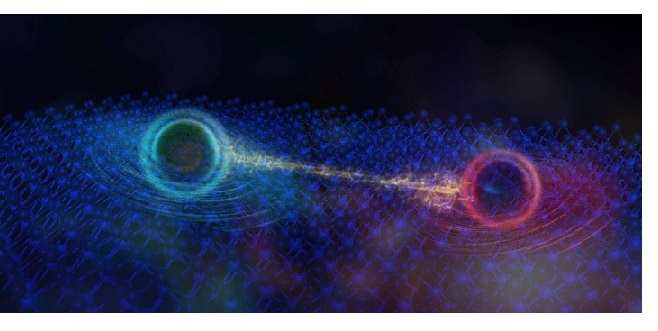
Now in a previous article I’ve shown that from the ain soph, the no-thing, the 1 came into being, one negative and one positive, 987654321 <0> 123456789, and when it reaches its max the it returns to itself . This happens inside the vesica piscis causing a vortex , from electrical to magnetic. While the next video is wrong as it places its zero away from its centre the principle is the same, without the outflow of numbers. But it will give you a good idea of it. .https://youtu.be/lJ3CD9M3nEQ.
Now the flower of life (and I still do not agree to its name) is made up of petals and it makes 3 rings, these 3 rings start with the hexagram and are 12 in number, the second ring has 66 petals and the third ring has 144. Now 144 minutes of arc per grid second is the speed of light.
But perhaps you may recall Plato’s Atlantis with its 3 rings, the 12 signs, the 3927 x 66= the zodiac and the 144 to be lifted up. These 12 are made up of 3 x 72 is 216.0 so it’s also 24 and 36, like 12 signs, 24 hours and 360 degrees. These 3 rings of water are for instance the ocean Noah travels upon, time flows upon, and man walks along.
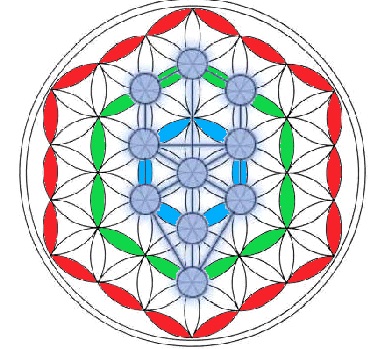
Have you pictured the extended pentagram as man carrying a sphere? Atlas.
Now this is both the seed within the circle as well as the effect. The only one I have not shown is found in other articles, the two mirroring pentagrams with either the face with horns or with man reaching the heavens.
12-01-2021
Moshiya van den Broek

